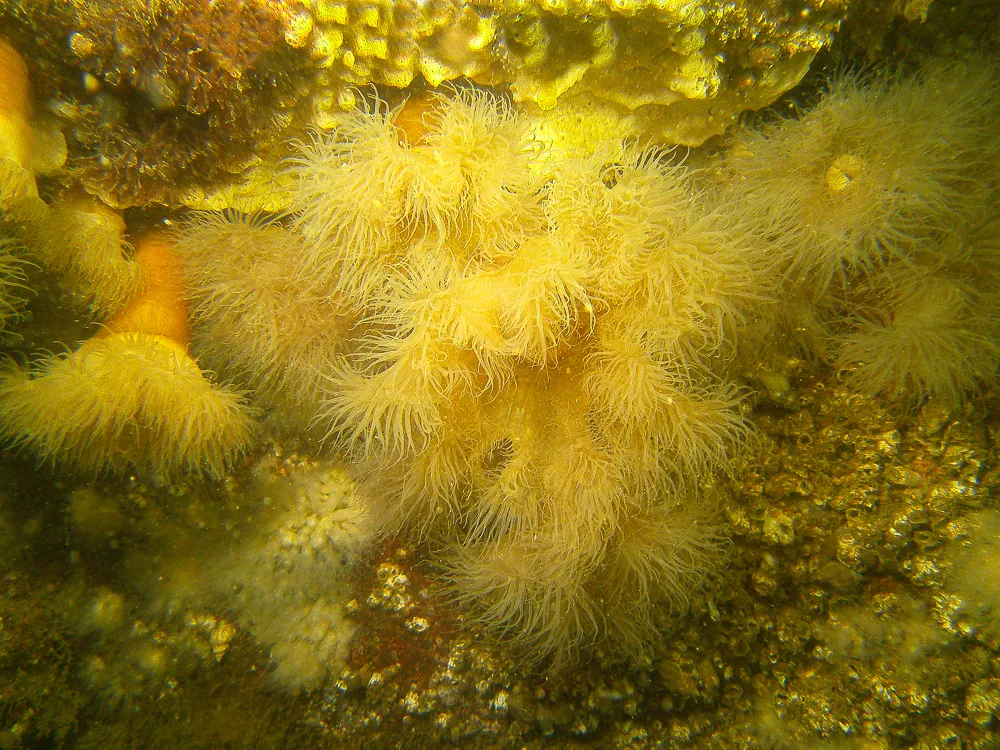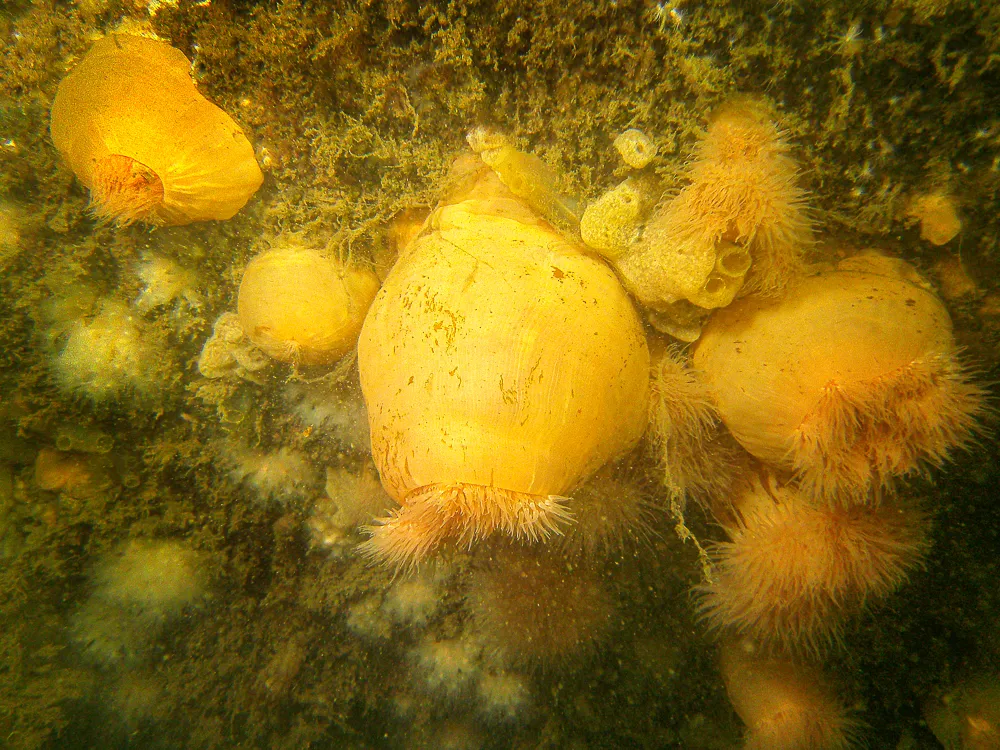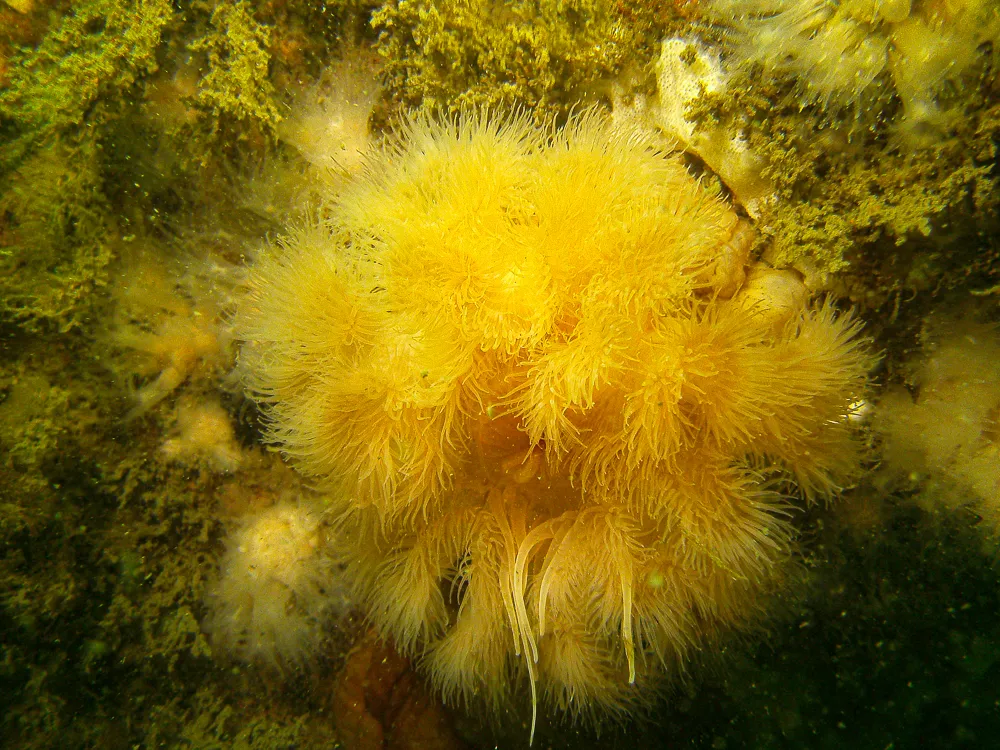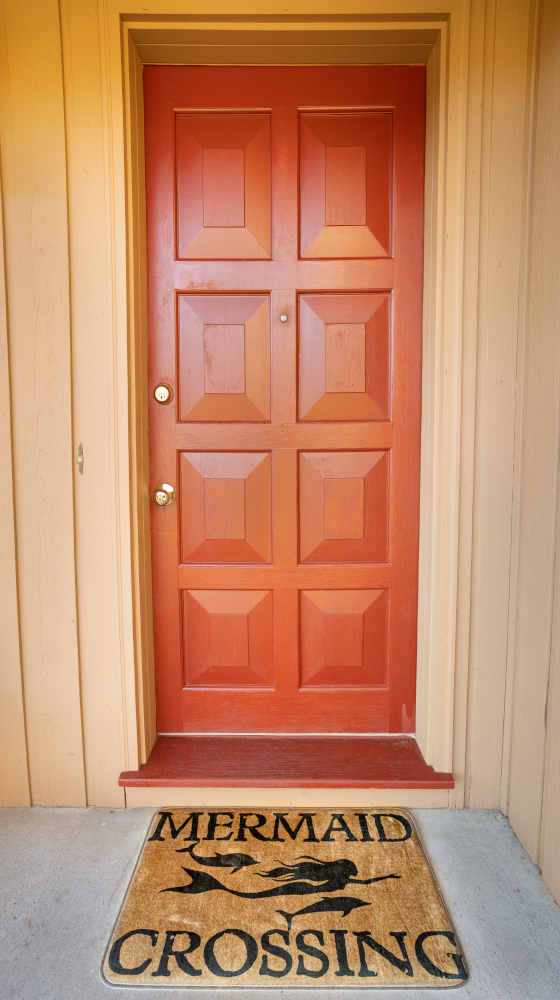New England Mermaid
I was attacked by an anemone and lived to tell about it! Yes, this is a true story, and it truly changed my already obsessed thinking of marine invertebrates. I really, really, really believe that if you read this story, your view towards many of our fellow animals will be changed forever. My appreciation of these fellow beings, which had already been extremely high, was brought to a whole new level after this interaction. And here’s how it happened.
One morning, this mermaid was hanging out with my underwater friends. It was a spectacular day – like almost every day underwater. I was heading into deeper waters, hoping to visit with my friends the Anemones. I found them, hanging out at home on their rocks, a home they peacefully shared with their soft coral neighbors. I thought we had a lovely visit, and I chose to capture a photo before leaving them. Well, apparently the focus of my portrait did not feel as kindly toward me as I did toward him (or her). I honestly do not know the sex of most of my underwater friends, and it is irrelevant to our relationships – and certainly irrelevant to the unfortunate incident that was to follow.
Before I tell you what happened, I need to introduce you to one of my most fabulous-looking friends. I say friends, because I hope that he (or she) will get over this particular incident and welcome me back again. Well … One of the most beautiful marine invertebrates in New England is the Northern Frilled Anemone. I have enjoyed seeing them for many years, even decades, and I often take photographs of them. Take a look at a picture of several of my frilly friends with whom I shared many peaceful visits. Look at their beautiful frilly feathery tentacles – aren’t they pretty? OK, so yes they contain toxins and they do kill their prey with them, but beauty does often hide something less friendly underneath! Besides … everyone does have to eat.

What exactly is a sea anemone? They are animals in the phylum Cnidaria, which basically means that they are related to jellyfish and corals. Let’s think of this group of animals as the pretty tentacled group. I do not believe that this is a literal translation from their Latin name, but, well … I don’t know any mermaids who speak Latin. Some anemones are tiny, less than ¼” and some are several inches large. Some are white and some come in bright colors – greens, reds, oranges, purples … a whole rainbow of colors. When feeding on plankton and small fishes, they send out their regular tentacles to catch them, stick to them, zap them, and bring them into their mouths in the center of all of those tentacles. When not feeding, they retract all of their tentacles into their stalk for protection, like a turtled hides in its shell. It is feeding time when they are truly at their best … much like us! I mean, put a slice of chocolate cake in front of me, my face will glow and you’ll see my prettiest smile! Food is fun!
Check out the Frilled Anemones below to see them in their different stages. I still think they are beautiful, but we do not all look our best after we’ve had a big meal or when we are sleeping or just waking up.

Well, now that you’ve been introduced … back to the day of the attack! I thought that this mermaid and the Anemone family all had a good relationship. Have you ever had a friend who sometimes annoys you? It happens. Or have you ever accidentally (or intentionally if you get your kicks this way) annoyed a friend? I know some of you are pranksters – mermaids and mermen do enjoy some mischievous fun. Well … I did not realize it, but I had accidentally not only annoyed my tentacled treasure but really pissed him off! I did not realize it until I looked at the picture when I got home – something in that picture really caught my attention. Do you see anything unusual in it?

Look toward the bottom of center. There are about 6 longer, thicker tentacles hanging out and downwards. I had never noticed those before, not even while taking this picture. It is not uncommon for me to see details in photographs that I had missed in real life – there’s just so much to look at while under the sea!
See the long tentacles sticking out? I learned that these are “attack tentacles.” Somehow, this species develops these in the animals that live on the edge of the colony. Nature really is full of wonder and magic! When there is a perceived threat (apparently such as a camera with a bright light next to them), they release these attack tentacles with the purpose of defending the colony – like a guard protecting the castle. These tentacles have stronger stinging cells and can reach further than their regular tentacles.
So, apparently I was attacked by a sea anemone, and so grateful that I lived to tell this fish (umm, invertebrate) tale!
Nature is certainly mysterious and magical. It is so amazing that only the anemones on the edge of the group will grow these extra tentacles to defend their relatives behind them. While this mermaid survived, a fish going in for a chance at a meal may not have had a positive outcome.
After learning about this incredible behavior, my already enamored perspective on all marine life became even more so. These are truly sentient beings. This animal, with no face to demonstrate any awareness, responded directly to my actions that accidentally caused the animal to experience stress. I’m sorry, dear anemone.
While learning about these special extra tentacles, I also learned that our tentacled friends have another defensive trick up their sleeve (well, within their body). Inside their feeding cavity, they have these threadlike tissues called acontia. Wow, another new vocabulary word for us! These threads have a higher concentration of stinging cells than do the regular tentacles. When an anemone gets threatened, she expels these threads for extra zap capabilities, and then retracts them back inside when the threat has ended.
My specific sentient defender/attacker is a Northern Frilled Anemone. It likes cold water which is why we have always seen more of them as we go further north, hence the word “Northern” in the name. See how I figured that out? I didn’t need to speak Latin for that one! Sometimes we don’t need to speak “science” terms to take meaning from a name! Also, it’s tentacles are frilly – so the name really makes sense.
Anemones attach themselves to a solid substate such as a rock, and they live out their lives there. They do have the ability to move slowly. Our frilly tentacled friends have been moving away, sometimes even forced out of the neighborhoods, both due to changing conditions and because bullies have moved in.
I used to see these on almost every dive in Rhode Island or Massachusetts. Sadly, in the past 2 years, I have not seen a single one. There are two reason for this. One is climate change and the other is invasive species. I first became aware of an invasive tunicate when I dove Folly Cove in Gloucester a few years ago. This had been one of my favorite dive sites, but I had not been for several years. This cove is lined with a large wall of boulders, including overhangs and places that you could swim behand and through and explore. The walls were all amazingly beautiful, and many were covered with frilled anemones. While gearing up, I was talking to a local diver. I had shared that I had not been to that spot in over 10 years. He told me how it had changed. He told me about the invasive tunicate. I did still see many anemones, but nothing like before. When I returned this past year, in 2021, I searched and did not see a single one.
This particular anemone that attacked me was in West Cove (which is actually the eastern cove but named after somebody whose last name is West – confusing, yes?) in Fort Wetherill, Jamestown Rhode Island, at a depth of about 60 feet. I usually dive the western cove (which is not called East) and I used to see many Northern Frilled Anemones on a wall on the east side of the western cove in 15-20 feet of water. If you are confused by these directions, imagine being a directionally-challenged mermaid! Regardless, understanding the exact locations is not crucial to understanding the point of the story. Here’s the point – I have not seen any at that location in the past few years! None at all. I did not visit the depths of the West Cove spot in the past 2 years – hopefully my friends, including the one that attacked me, are still there. I hope to try and visit them before the year is out. I hope they are still living there. I have seen some of the invasive tunicates moving in, and I have noted that the water temperatures have been slightly warmer. I hope that they haven’t been forced to move out. There is hope because it is colder in their deeper home.
Anemones are some of the most beautiful creatures in the ocean. I love finding them and taking time to visit. In the future, I will be especially careful not to cause them stress. Like all of you, I always want to be kind to my fellow beings. There’s always so much more to learn, above and below the waterline.

Leave a Comment